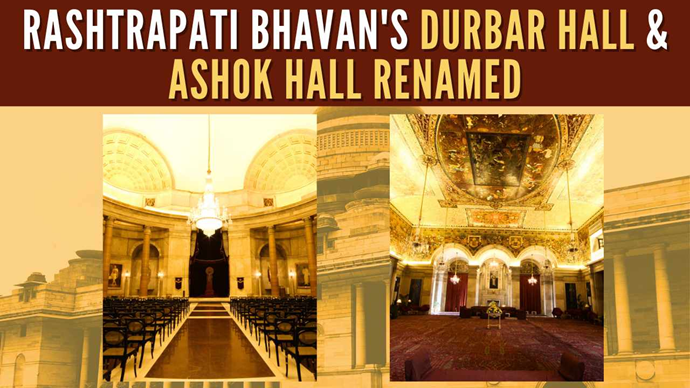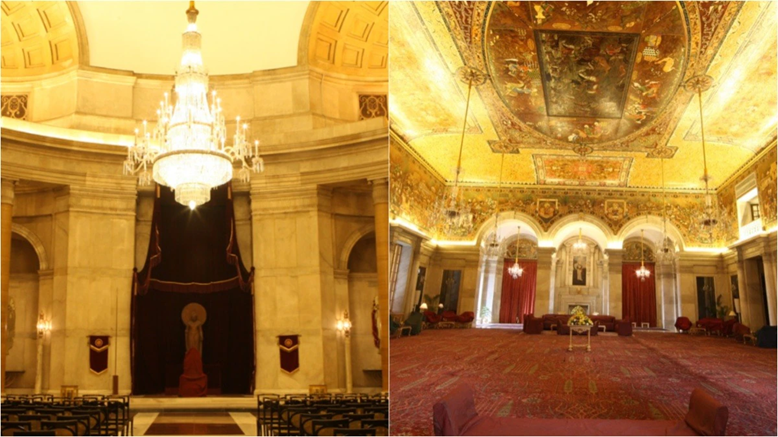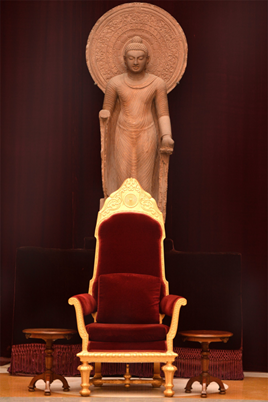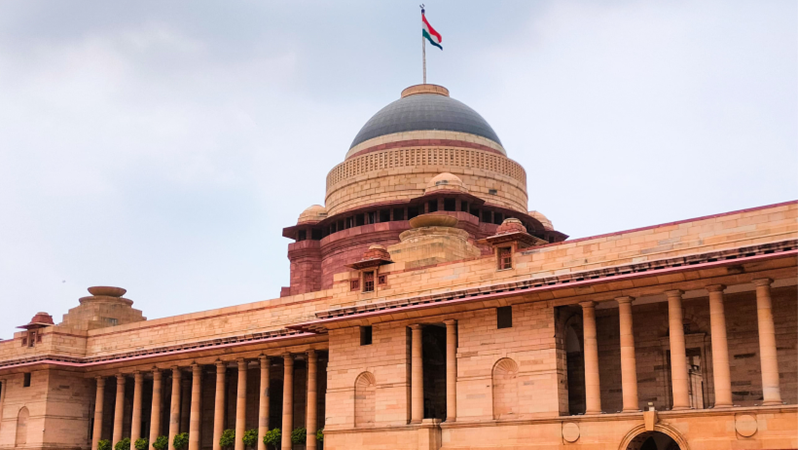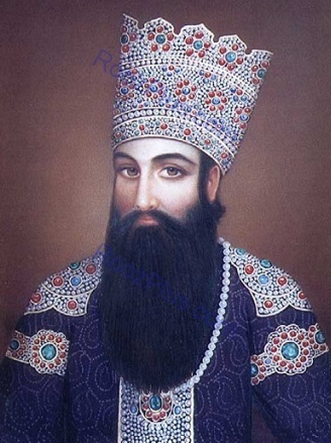President Droupadi Murmu announced the renaming of two halls in the Rashtrapati Bhavan – ‘Durbar Hall’ and ‘Ashok Hall’ – as ‘Ganatantra Mandap’ and ‘Ashok Mandap’ . “There has been a consistent endeavour to make the ambience of the Rashtrapati Bhavan reflective of the Indian cultural values and ethos” and the terms ‘Durbar’ and ‘Hall’ have therefore been replaced.
Rashtrapati Bhavan’s Durbar Hall & Ashok Hall Renamed
Why In News
- President Droupadi Murmu announced the renaming of two halls in the Rashtrapati Bhavan – ‘Durbar Hall’ and ‘Ashok Hall’ – as ‘Ganatantra Mandap’ and ‘Ashok Mandap’ . “There has been a consistent endeavour to make the ambience of the Rashtrapati Bhavan reflective of the Indian cultural values and ethos” and the terms ‘Durbar’ and ‘Hall’ have therefore been replaced.
- ‘Durbar’ “refers to courts and assemblies of Indian rulers and the British. It lost relevance after India became a Republic, that is, ‘Ganatantra’”, it said.
Durbar Hall Of The Rashtrapati Bhavan
- Construction of the Rashtrapati Bhavan was completed in 1929 after King George V declared that the capital of British India would be shifted from Calcutta to Delhi in 1911.
- The hall hosts Civil and Defence Investiture Ceremonies, where the President confers honours to the recipients. Swearing-in ceremonies, like those of the Chief Justices of India, are also conducted here. Durbar Hall witnessed a historic moment in the swearing-in ceremony of independent India’s first government in 1947.
- Historian Christopher Hussey noted, “The impact of the Durbar Hall, however approached, is immediate, overwhelming and utterly silencing.” Its walls are 42 feet high, cased in white marble. The dome is around 22 metres in diameter. “An exquisite Belgium glass chandelier decorates the Durbar Hall as it hangs from a height of 33 meters from its ceiling,” the official website notes.
- Even before construction began, there was a question about the extent of Indian influences in the architecture.
- According to the official book ‘The Arts and Interiors of Rashtrapati Bhavan: Lutyens and Beyond’ (2016), “Even as [Mughal emperor] Bahadur Shah Zafar was exiled to Burma, the British Raj stepped into the shoes of the Mughal Empire. It incorporated the Durbar and other Mughal court rituals into its political fabric, laying claim to being the legitimate heir to the Mughal Empire.”
- Architect Edwin Lutyens was chosen to helm the project of new constructions in Delhi but primarily under the Western style, with a few Indian elements incorporated. For example, marble jaalis (latticed screens) in the attic serve a decorative purpose and provide ventilation and light.
- The hall is encircled by columns made of yellow Jaisalmer marble, with white caps and bases. Marble in multiple colours was imported primarily from Rajasthan’s Makrana, Alwar, Marwar and Ajmer. A deep chocolate-coloured marble was imported from Italy.
- Two thrones were also installed for the Viceroy and his wife. The President’s Chair later replaced them and a 5th-century Buddha statue now stands behind it. The book says, “Although fundamentally the same, the room has changed subtly in its purport. The designs for the canopy under which the throne rests remain unchanged… After Independence a new throne with symbols of the Indian republic was placed here instead.”
What Is The History Of The Ashok Hall
- ‘Ashok Hall’ was originally a ballroom. It is now used for the presentation of credentials by Heads of Missions of foreign countries and as a formal place of introductions for the visiting and Indian delegations before the commencement of the State Banquets hosted by the President. A loft-like space is used for playing the national anthem during important functions.
- Six Belgian chandeliers hang from the ceiling and various paintings adorn the room. One painting gifted by Fath Ali Shah, the second of seven Qajar rulers of Persia, shows him hunting a tiger.
- Italian artist Tomasso Colonnello, with the help of 23 Indian artists, was enlisted to extend the forest theme to the rest of the room.
- “Four more hunting scenes along with inscriptions in Persian were added to beautify the Ashok Hall’s ceiling. The walls of the hall portray a royal procession and while the ceilings were painted directly, the walls were done on huge hung canvasses,” the website states.
